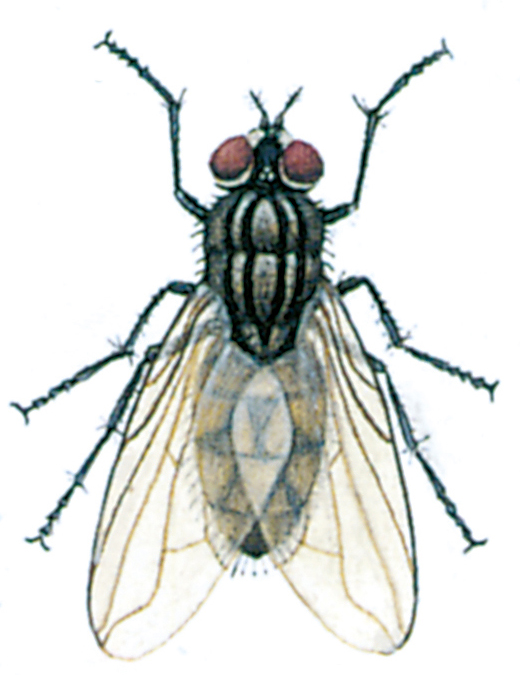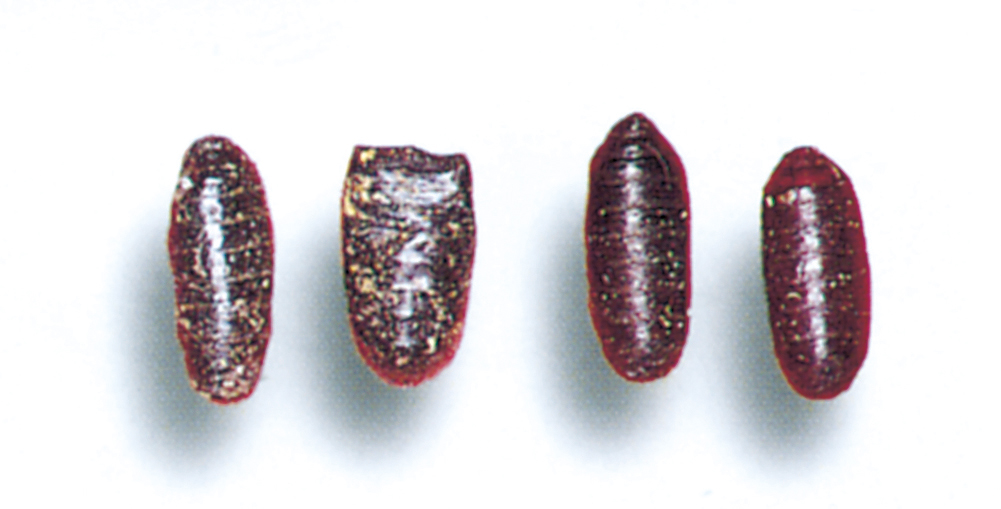
Latin: Musca domestica
This is by far the most common fly found in houses, and although it may occur in any room it is mainly found near to foodstuffs.
It has been suggested that this fly came originally from Africa, but nowadays it has followed man to all corners of the earth. In northern Europe it probably did not become established before man kept domestic animals indoors during the winter, a practice which did not start until about the beginning of the Iron Age, 400 B.C.

Housefly larvae live in manure, but they can also develop in kitchen waste and similar materials. A single female lays about 200 eggs and under favourable conditions, at a temperature around 30° C the whole development from egg-laying to adult fly takes only 7 days.
Houseflies visit dung, carrion and offal of all kinds and naturally they pick up bacteria and viruses. They can, therefore, act as carriers of diseases (p. 55) and are wholly undesirable from the hygienic viewpoint. In addition, they can be in- tensely irritating when they occur in swarms, settling on man and animals.

Sometimes various tiny invertebrates can be found hanging on to the legs and body of a housefly. These may be mites of various kinds, which in this way are trans- ported from place to place by the m’bre mobile flies, or they may be false scorpions (p. 66). In all cases these are species which live in or on the manure where the flies develop, and they only release their grip when they come close to more manure, so there is no danger that they will become established indoors.




